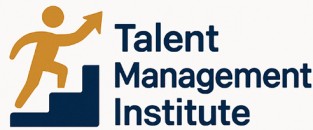
Understanding Employee Competencies
Decoding the Essence of Job Competencies
Understanding employee competencies lies at the core of effective talent management. Organizations today are increasingly shifting towards a skills-oriented approach, recognizing the critical role competencies play in driving organizational success. Competencies encompass a blend of knowledge, skills, and abilities that employees bring to their job roles, enhancing overall workforce performance. Competencies can be categorized into two main types: soft skills and hard skills. Soft skills, such as communication, problem-solving, and critical thinking, are crucial for dynamic work environments. On the other hand, hard skills are job-specific, focusing on technical expertise and industry knowledge. Both are vital for fostering a high-quality workforce capable of meeting organizational goals. A competency-based approach aids in aligning an organization's strategic objectives with employee performance. It emphasizes development and growth, ensuring that competency development aligns with career advancement. This approach not only supports performance management but also cultivates a culture of continuous learning, empowering employees to thrive in their respective roles. Employers have begun prioritizing employee competencies in various organizational processes—from skills-based hiring to structured employee development programs. By focusing on competencies, organizations can enhance the long-term potential of their talent pool, paving the way for sustained business growth. For more insights on maximizing talent through skill utilization, you can explore more at Talent Management Institute.The Business Case for Competency Focus
The Growing Need for Competency in the Modern Workplace
In today's fast-paced and dynamic business landscape, organizations are relentlessly pursuing new ways to secure a competitive advantage. One of the most effective strategies has been placing an emphasis on employee competencies. Here, we explore the compelling business case for adopting a competency-based approach. Firstly, understanding the difference between skills and competencies is crucial. Skills are specific learned abilities, while competencies combine these skills with knowledge, personal attributes, and more, enabling an individual to perform tasks efficiently and to organizational standards. Organizations focusing on competencies can better align their workforce with their strategic organizational goals. By identifying and cultivating specific job competencies that are critical to success, businesses can more effectively achieve long-term objectives. This alignment also facilitates better talent management and workforce planning. Taking a competency-based perspective allows employers to implement practices that enhance both recruitment and performance management. For example, through competency-based hiring, organizations can screen candidates for critical thinking or problem-solving skills that are essential to the job but may not have been captured in traditional degree requirements. Moreover, focusing on competencies such as soft skills alongside hard skills ensures a balanced approach that supports the development and growth of the employee. This is essential as the modern workforce needs to navigate complex interpersonal dynamics and organizational challenges. By emphasizing competencies, businesses can also drive higher employee engagement. Workers who see their development aligned with personal and organizational success are typically more motivated, leading to higher quality work output. For more insights on managing skill dynamics in talent management, you can explore more from our source on navigating the dynamics of competency in the workforce: Navigating the Dynamics of Skill and Will in Talent Management.Competencies and Employee Engagement
The Link Between Competencies and Engagement at Work
In today’s competitive business landscape, the focus on employee competencies is not merely a trend; it’s a strategic requirement for organizational success. Engaged employees are often the most valuable asset to any organization, and there’s a strong correlation between competencies and employee engagement. Understanding this relationship can help employers effectively implement a skills-based approach.
Competencies serve as a foundation upon which performance management and career development strategies can be built, providing clarity and direction for both employees and employers. When employees understand their job competencies, they can better align their skills with organizational goals, which fosters a sense of belonging and purpose.
Including both hard skills and soft skills such as critical thinking and problem-solving in competency frameworks can lead to improved job satisfaction and performance. Employees who recognize their growth potential and the value they bring to their organization are more likely to feel committed and engaged with their work.
Organizations that prioritize the development of their workforce by investing in competency-based training and development initiatives create an environment where employees are motivated to perform at their highest level. By focusing on skills that align with business needs, organizations can achieve both short-term results and long-term growth.
Furthermore, a competency-based approach addresses degree requirements and reflects the real-world applications of skills. By emphasizing skills and competencies over formal education credentials, organizations broaden their talent pool, making skills-based hiring more effective and inclusive.
The Talent Management Institute’s article on exploring the potential of the BWC Learning Center highlights the importance of leveraging learning platforms to enhance talent management strategies. Employing such resources is pivotal in sustaining engagement and ensuring the high quality of the workforce.
Competency-Based Recruitment and Selection
Leveraging Competencies in Hiring and Selection
In the competitive landscape of today’s business world, organizations are redefining their hiring strategies by employing a competency-based approach. This shift resonates with the understanding that focusing on employee competencies can significantly contribute to organizational success. Competencies, which encompass both hard and soft skills, are crucial in determining how effectively an employee can perform a job. Employers are increasingly prioritizing these competencies over mere degree requirements or past job experience, as they offer a more comprehensive view of an individual's potential. By aligning hiring practices with well-defined job competencies, businesses can ensure a high-quality workforce that is better equipped to meet their organizational goals. A competency-based hiring process involves clearly defining the critical thinking, problem-solving, and interpersonal skills necessary for each role. This enables organizations to build a more diverse and well-rounded team, capable of innovating and driving growth. Moreover, when employees are selected based on their alignment with organizational values and competencies, it fosters a work environment conducive to development and career progression. Not only does this approach streamline the selection process, but it also enhances talent management by focusing on long-term workforce engagement. When selection is based on identified competencies, employees are more likely to thrive in their roles, reducing turnover and promoting loyalty. Thus, employers who effectively leverage competency-based practices in their recruitment strategy lay the groundwork for future success, ensuring their organization remains agile and competitive in an ever-evolving market.Developing Competencies Through Training and Development
Fostering Growth through Skill Development
Employer-driven competency development has become a significant focus in nurturing a capable workforce. Organizations frequently invest in training to cultivate both hard and soft skills among employees. From problem-solving techniques to critical thinking exercises, these initiatives aim to bridge the gap between current capabilities and future needs. The transformation towards a competency-based approach in training empowers employees to adapt to the ever-changing job market. Such efforts are pivotal in achieving long-term organizational success by aligning employee growth with organizational goals. Employers are increasingly developing tailored programs that target specific job competencies, ensuring employees acquire the necessary skills to excel in their roles.Innovative Approaches to Competency Development
Several innovative strategies have emerged, emphasizing a shift from traditional degree requirements to skills-based credentials. By focusing on job competencies and organizational needs, companies can foster a more agile workforce. This shift is reflective of a broader trend towards performance management systems that highlight both individual and team contributions in achieving business objectives. Organizations are also recognizing the importance of ongoing career development pathways, promoting continuous learning and professional growth. Through mentorship programs, workshops, and on-the-job training, employees are encouraged to enhance their skills, preparing them for future roles within the company.Addressing Challenges in Competency Development
Despite the clear benefits, organizations face challenges in implementing competency-based practices. Balancing the needs between developing soft skills and maintaining technical proficiency can be complex. Nevertheless, by adopting a comprehensive talent management strategy, employers can overcome these hurdles. Customized training programs tailored to the unique needs of the workforce can significantly improve skill utilization and ensure high-quality outcomes. It's essential for organizations to continuously assess their development initiatives, ensuring they remain aligned with evolving business demands and facilitate employee engagement.Challenges and Solutions in Competency Management
Overcoming Barriers in Competency Management
While the benefits of focusing on employee competencies are clear, organizations often face significant challenges in implementing competency-based practices effectively. Here, we explore some common obstacles and propose potential solutions to help businesses navigate these complexities.
Identifying Relevant Competencies
One of the primary challenges is identifying the right competencies that align with organizational goals. Businesses need to distinguish between essential job competencies and those that are merely desirable. To address this, organizations can conduct thorough job analyses and engage with industry experts to ensure they focus on skills that drive organizational success.
Integrating Competencies into Existing Frameworks
Integrating competencies into existing performance management and career development frameworks can be daunting. Employers must ensure that competency-based approaches are seamlessly woven into the fabric of their talent management systems. This might involve revising job descriptions, updating performance metrics, and aligning competencies with long-term organizational objectives.
Balancing Soft and Hard Skills
Another challenge lies in balancing soft skills, such as critical thinking and problem-solving, with hard skills. Employers need to recognize that both types of skills are crucial for workforce development. A balanced approach, which emphasizes both soft and hard skills, can enhance employee engagement and foster a more adaptable workforce.
Ensuring Consistent Application Across the Organization
Consistency in applying competency-based practices across various departments and teams is vital for organizational success. Organizations should develop standardized processes and provide training to ensure that all employees and managers understand and apply competency frameworks consistently.
Leveraging Technology for Competency Development
Technology can be a powerful ally in overcoming competency management challenges. By utilizing advanced tools and platforms, organizations can streamline the assessment, development, and tracking of competencies. This technological integration can facilitate a more efficient and effective competency-based approach.
In conclusion, while challenges in competency management exist, they are not insurmountable. By adopting a strategic and systematic approach, organizations can effectively harness the power of competencies to drive business growth and achieve their organizational goals.













